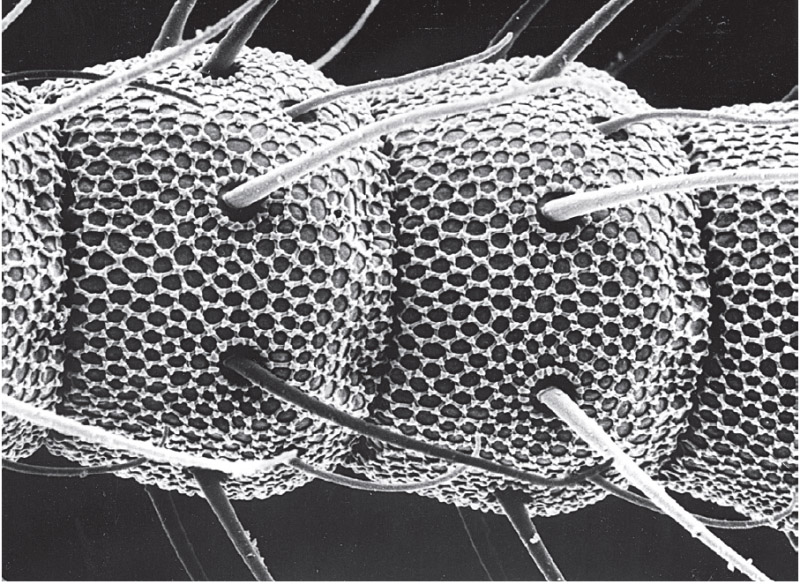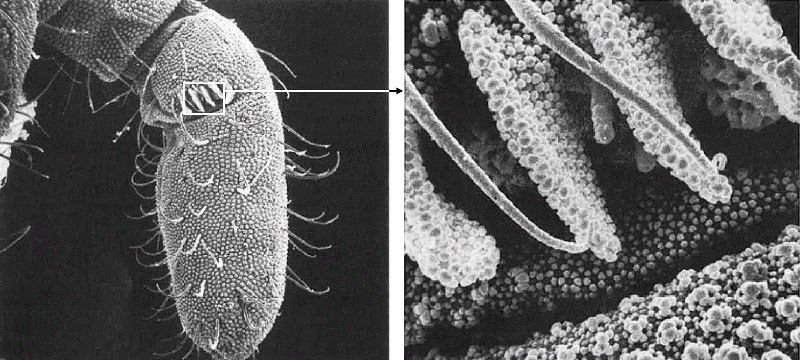 Multifunctional antennas :
Multifunctional antennas :
The antennas of springtails adopt various forms as shown by the images at the end of the article, but as for other organs their constitution, whatever the families, have similar characters or similar (among others four segments). They are particularly well endowed with sensory structures to capture the presence of chemical substances in the air of chemical substances or on the ground, when the animal moves while tapping the substrate with its antennas. (Opposite, image showing two items of the antenna of a Symphypleone, seen under an electron microscope)1.
Antennas are equipped with ordinary bristles that detect vibrations and air movements but also chemo-sensitive bristles. All springtails, with the exception of a single species in Asian caves (Gulgastrirunae), have a sensory complex on the third antennal segment composed of a minimum of two sensillae. These sensilla protected by bristles are covered with tiny pores whose size is close to 5 nanometers (below antenna Protaphorura sp.)2

Below3, example of antennas:
Poduromorphs: (from left to right) - Kalaphorura burmeisteri, Neanura muscorum, vitronura giselae.

Symphypleones: (from left to right) - Dicyrtomina ornata, Sminthurides malmgreni, Allacma fusca

Arthropleones: (from left to right) - Isotomurus plumosus, Tomocerus minor, Orchesella villosa.

A large number of springtails have a post-antenna organ "PAO" located just behind the base of the antennas and arranged symmetrically (see article on PAO).
1: Image from "Le petit collembole illustré" (out of print) - Jean-Marc Thibaud. Edition Arvernsis (2010)
2: Illustration adapted from "Biology of the Sprintails". S.P. Hopkin, from "Atlas of the biology of soil arthropods" - G.Eisenbeis and W.Richard (1985)
3: Photos by Philippe Garcelon.